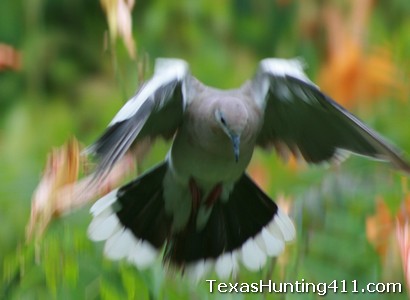The dove hunting reports coming in from around the state of Texas are mixed. Weather has ranged from cool to hot recently, and the dove hunting in Texas has been the same. Whitewings continue to dominate San Antonio fields of corn and milo in the afternoon as hunters have shot near-limits around tree lines. High-flyers have trickled from South Zone fields near Uvalde. The area around Katy, Hockley and Brookshire fields have been fair at best, and hunter participation has been low this season. What can you expect? Low bird numbers equates to low hunter turnout.
The Waller area hunters saw better shooting this weekend as nearby South Zone fields were hunted, pushing mourning doves north to Central Texas fields. More whitewing showed around Sealy and Columbus over the weekend. On up the coast, Dayton and Beaumont fields have given up half-limits of both whitewing and mourning doves. Some also reported good shoots on public dove hunting lands. The hunting season runs through October 23 and prospects are fair to good right now. Look for food and water.

The best hunting in the South Zone came from traditional South Texas haunts in the Rio Grande Valley where whitewings have been good around milo, corn and wild sunflowers. Devine, Big Foot, Three Rivers, Fashing and George West enjoyed limit shoots too. Dove hunters along the northern boundaries of the South Zone reported losing most of their birds just before the opener as high winds and rain blew through Wharton and Matagorda county fields, sending the bulk of the whitewing population to other areas.
The dove opener there was a lackluster one, but doves began moving back in by the end of the weekend. Mourning doves were solid near Palacios, Beasley, Lissie and Eagle Lake, but El Campo had mixed reports with most hunters leaving with far less than limits. The dove season runs through October 30 in the South Zone and the dove hunting outlook is fair to good depending on location.




